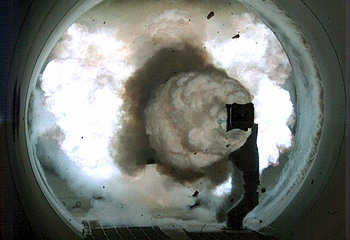INDIAN ARMED FORCES CHIEFS ON
OUR RELENTLESS AND FOCUSED PUBLISHING EFFORTS

SP Guide Publications puts forth a well compiled articulation of issues, pursuits and accomplishments of the Indian Army, over the years

I am confident that SP Guide Publications would continue to inform, inspire and influence.

My compliments to SP Guide Publications for informative and credible reportage on contemporary aerospace issues over the past six decades.
TecKnow
Improved Safety

Electromagnetic railgun sets world record by shooting projectile at Mach 7
The US Navy’s electromagnetic railgun has set a world record by shooting projectile at Mach 7, seven times faster than the speed of sound.
The office of Naval research (ONR) has achieved a milestone conducting a world record of 33-megajoule shot of the electromagnetic railgun aboard Naval surface Warfare Center dahlgren division.
Chief of Naval research rear Admiral Nevin Carr said, “This demonstration moves us one day closer to getting this advanced capability to sea. The 33-megajoule shot means the Navy can fire projectiles at least 110 nautical miles, placing sailors and marines at a safe standoff distance. The high velocities achievable are tactically relevant for air and missile defence.”
The gun was launched from a control centre after approximately four minutes of charging of electromagnetic rails. After the completion of the charging process, the gun was fired and the witnesses saw a quick burst of flame as the projectile travelling at 2,500 metres per second (or Mach 7) hit its intended target.
Unlike conventional cannons which rely on an explosion to fire a projectile, the electromagnetic railgun uses an electromagnetic current to accelerate a non-explosive bullet at several times the speed of sound. The projectile, which is conductive, travels along a pair of metal rails as an electric current is passing through the projectile. The rails generate a magnetic field, which interacts with the current to move the projectile at extremely high velocities.





